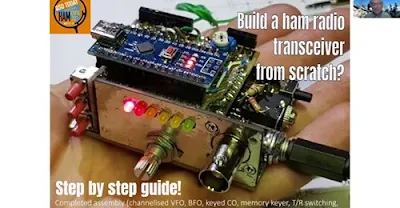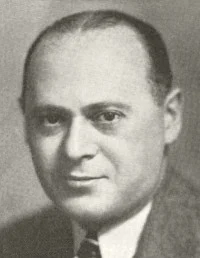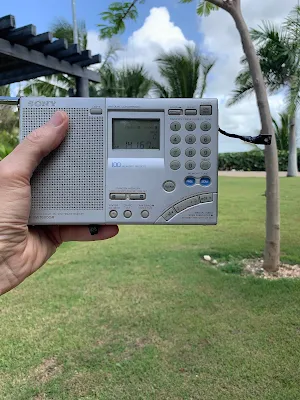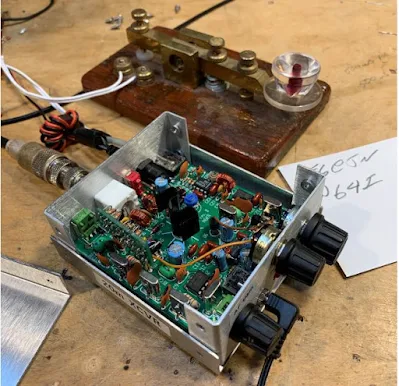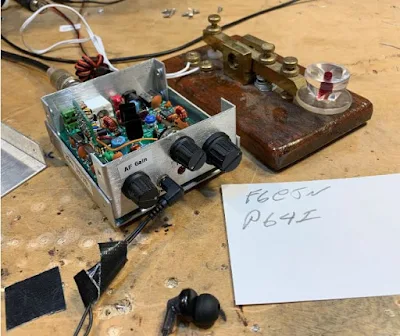Wow, this is really an amazing project. It is so good that I'd like to believe that it is really "all our fault," but the credit obviously goes to Tom, the very intrepid builder. In a more just world, Tom would be given a ham radio license solely on the basis of this project. Great work Tom. We look forward to more Solder Defined Radios from your workbench.
I stumbled across your podcast a few years ago. I had no interest in
amateur radio, I was just looking for an electronics podcast that
actually discussed electronics (naming no names here, obviously).
Well, the inevitable happened, and some of your enthusiasm rubbed off
on me. I now find myself humbly enclosing a photograph of my first
homebrew receiver for 20m.
The project was one of those "spontaneous construction" affairs,
triggered mainly by breaking up an old satellite receiver (I've
honestly no idea what it was for) which yielded up several SBL1s and a
10.7MHz crystal filter - these form the key elements of the new
receiver. It's a full SDR (solder defined radio) of a conventional
single-conversion superhet arrangement. The chief abnormality is that,
because the IF filter is as wide as the proverbial barn door, I only
use "one edge" - the other half of the passband being provided after
conversion to baseband. Of course, that only works if there are no
massively strong stations in the 6kHz above where you're listening,
but it seems to be ok most of the time. It does give me the advantage
of being able to adjust the lowpass point of the AF signal by
adjusting the BFO, which is nice.
You'll notice there's a lot of "digital nonsense" in the picture, for
what's supposed to be an analogue radio. This "supervises" the two
VCOs: There is an FPGA which implements a pair of frequency meters and
an STM8 microcontroller which is in charge of adjusting the control
voltages to keep the VCOs where they should be. It's all slightly
roundabout because I wasn't clever enough to design a PLL which would
give the required resolution (and I wanted to do something "more RF"
than throw down a DDS chip).
This gives me stability as well as fancy bells and whistles, like
numeric readout, tuning info via RS232, automatic scanning and
frequency presets. I've used a (cheap) industrial/automation style
encoder for the tuning control, which gives a lovely analogue-like
action.
Despite my best efforts (and a lot of ferrite in strategic places) I
wasn't able to keep all the digital spurs out of the receiver. So I
devised a dirty hack by way of a button which will shift the MCU an
DAC clocks to a different frequency. I can't remove the spurs, but now
I can hide them!
So far I've played with a "long" wire and a little shielded loop for
antennas - I'm in a first floor flat with a lot of noise locally, and
my plan is to get a loop up in the loft space (so the next project
might be a rotator!). I fancy maybe seeing if I've space for an
inverted V, too.
You'll notice that I've not attempted a transmitter. That, of course,
is because I'm not yet a licenced ham! However, I'm intending to put
that right sometime later in the year. Then - who knows - I might make
a contact!
Thanks for reading (although really it's the least you could do given
that this *is* all your fault) and I hope you've enjoyed hearing about
all the trouble your little podcast has got me into.
Keep up the good work gentlemen,
73 from South-West England.
Tom.
PS. I also have a copy of Bill's book, which I've very much enjoyed.

